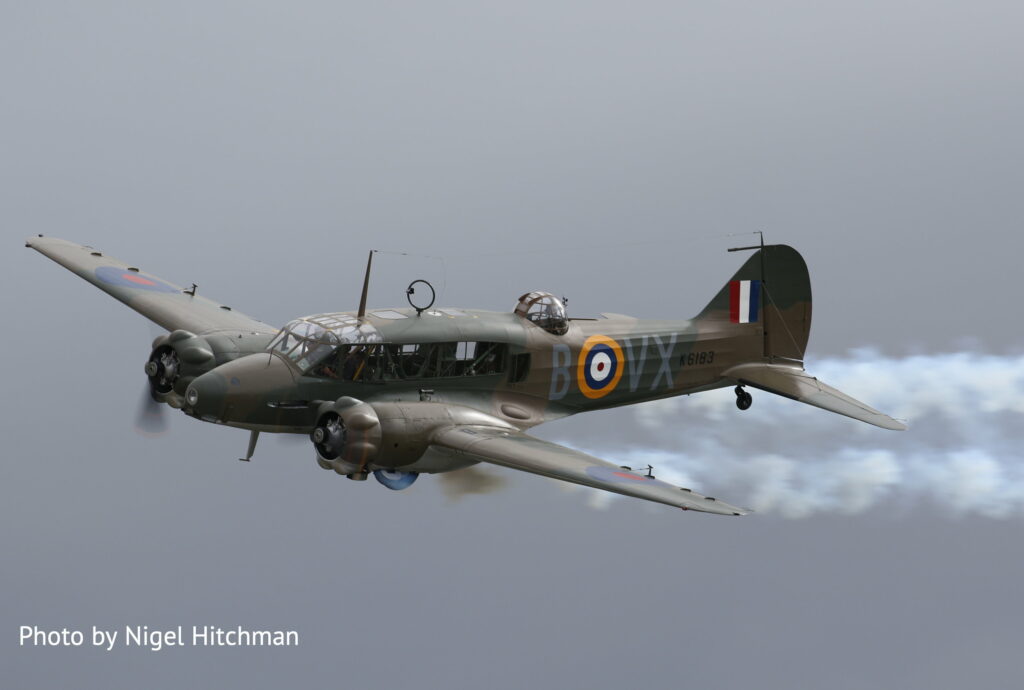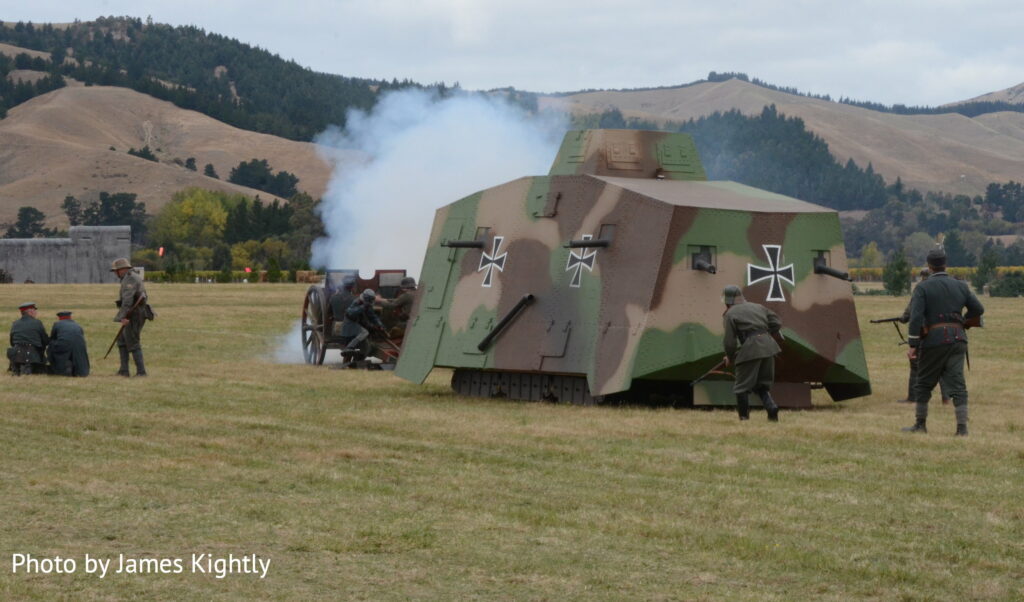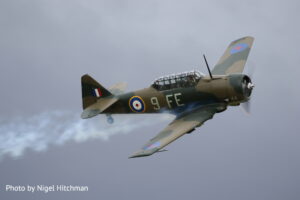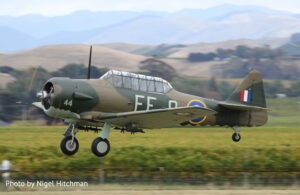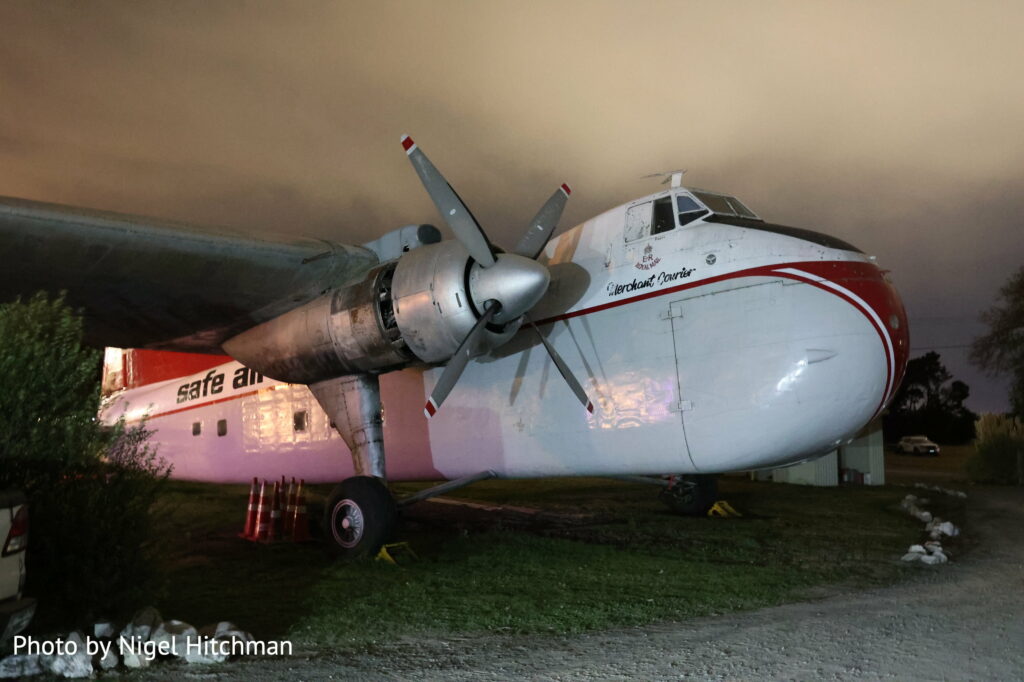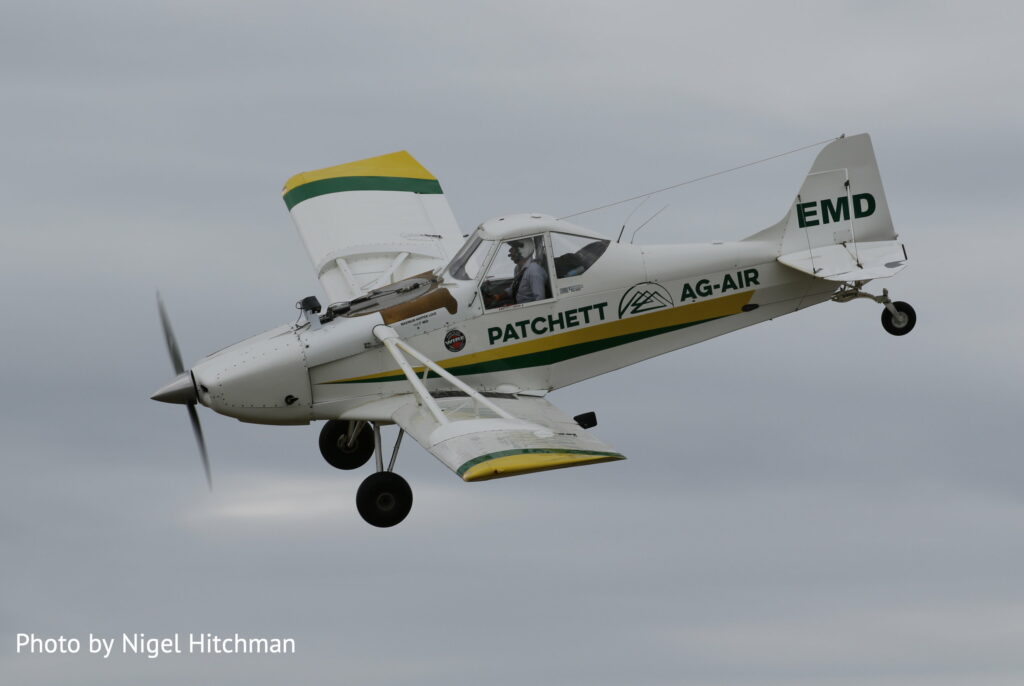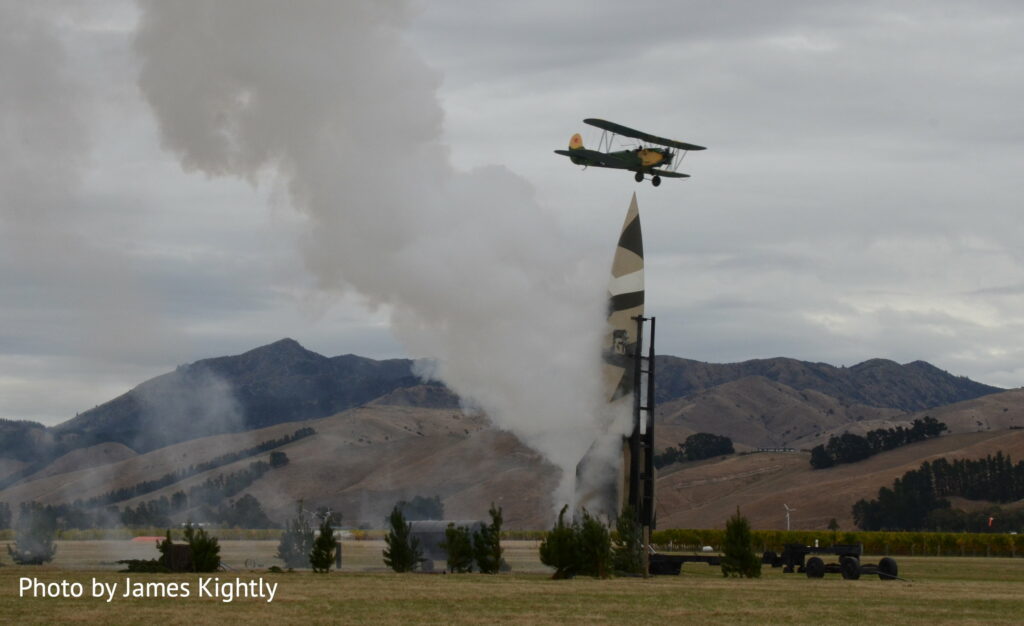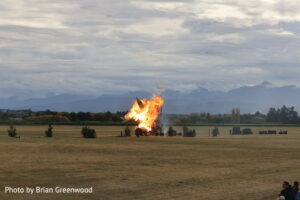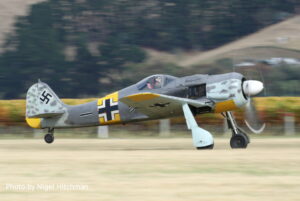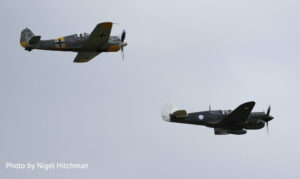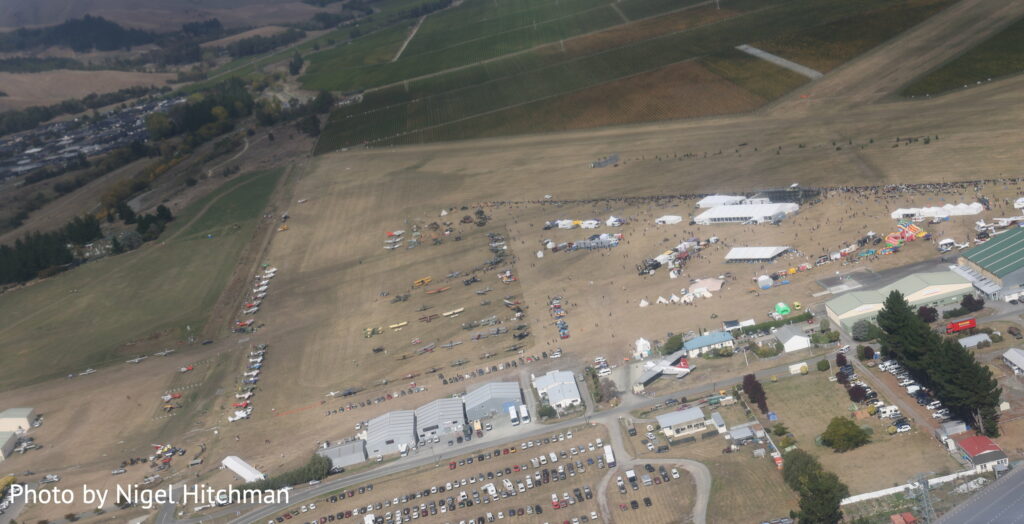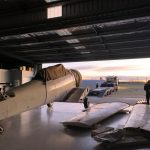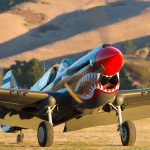By James Kightly & Nigel Hitchman
Re-establishing airshows post Covid has been a challenge worldwide, and for venues more far flung than others, a different kind of challenge. In New Zealand, over the last two decades, Easter has included a major airshow, alternating between Omaka (starting in 2001) and Wanaka (commencing in the 1980s). These quickly rose to become first rank events, and put Kiwi airshows on the global map.
After an excellent show in 2019, the Omaka-based Yealands Classic Fighter airshow team were set for another show, scheduled in 2021. Changing access requirements and COVID waves meant that not only was the show postponed, but another attempted reschedule was itself cancelled due to these circumstances beyond the team’s control.
The organizers faced further challenges. They were forced to change the display line to a straight SE-NW due to not being allowed to fly over housing to the southeast of the airfield below 1,000 ft. This meant the previous superb bent show line which allowed aircraft to curve around the crowd and show great topside passes, similar to Old Warden. Some pilots coped with the new display line very well and still flew great displays, while a few were high and distant.
The weather was cold and overcast most of the first two days, but luckily for the Sunday, which had the worst forecast all week, it turned out sunny and warmer for a really great day.
The highlight of the show for many (especially those not local) was the late John Smith collection, with the fantastically preserved de Havilland Mosquito FB.VI NZ2336 (TE910) doing several engine runs each day to the delight of the big crowds that would gather. The team, led by Al Marshall, have cleverly hooked up an independent fuel supply and electrical system to run the engines, so as not to need to use any of the aircraft’s original fuel system and wiring. The Mosquito is an amazing piece of history, rescued by John from the scrapyards in the late 40s and he collected and installed every piece of equipment it would have had in operation. [A full interview with Al Marshall will be presented on Vintage Aviation News this year.]
The Mosquito was flanked by the combat veteran Curtiss P-40N NZ3220 ‘Gloria Lyons’, conserved in its original wartime paint, and John’s de Havilland Tiger Moth ZK-BQB. He flew the Tiger until the early sixties, after which it was also dismantled and put in his shed. The Tiger was reassembled, with the engine found to be in remarkable condition and it too runs from a dedicated small fuel tank and was taxied to and from the hangar each day.
Of the other aircraft John rescued and stored in his shed for all those years, the historic, combat veteran Lockheed Hudson is on display in the Omaka Aviation Heritage collection (where the Mosquito, P-40 and Tiger Moth are usually kept) his other P-40E is on restoration to fly at Omaka, with his Harvard waiting in the wings and his P-51D Mustang (one of very few ex Royal New Zealand Air Force [RNZAF] survivors) is on restoration to fly at Ohakea. Hopefully this Mustang might be completed in time for Wanaka next year.
Another highlight on static display was the Grumman G-44 Widgeon ZK-CFA which flew again earlier this year, after a long restoration, having been out of the air for over twenty years. Its still owned by Grant Harnish, who operated it (and one other) commercially for quite a few years around the Bay of Islands, a hundred-plus miles north of Auckland. Nowadays he continues to operate helicopters.
Highlight of the flying display for many was the collection of five Waco biplanes from the golden age of aviation. It was the most ever seen together at an event outside the USA, and all five are New Zealand resident examples. Leading them was the recently completely restored Waco UOC ZK-AEL, back to its ‘home’, as it was delivered new to the Marlborough Aero Club at Omaka in 1936. It has been restored by JEM Aviation (also based on the airfield) to its exact 1936 colors and configuration. It was found stored in Australia a few years ago, where it had been since 1958.
The other Wacos were the recently imported UPF-7 (appropriately registered ZK-UPF) and three more modern examples: a Taperwing ZK-WTW built from a kit in the 1990s, and two Waco Classic YMF-5s, registered ZK-YMF and ZK-CFL.
Some of the other best displays were performed by Cam Hawley in his Beech C-17L Staggerwing VH-UXP, Ryan Southam and Bill Reid in Bill’s superbly restored Avro Anson Mk.1 (which is currently for sale, though everyone there hoping it remains in New Zealand) and also the de Havilland Venom WE424 which is actually an ex Swiss AF aircraft – and perhaps the only single seat Venom now flying worldwide. It was also the only jet in the display, not that we needed more!
Great War aircraft were a little thin on the air compared to previous years, although there are plenty displayed in the Omaka Aviation Heritage Centre. Three accurate replicas from the workshop of Achim Engels in Germany were due, a Fokker Eindecker, D.VII and D.VIII, formerly on loan to the now closed TAVAS collection at Caboolture, Queensland, but these were still at the port in Nelson unfortunately, but something to see next time. However, flying we had the two Nieuport 17 replicas, both powered by Rotec Radials, the Sopwith Pup with one of the locally manufactured Classic Aero Machining Works Gnome rotary engines fitted, and the very recently restored and flown Bristol F2b Fighter replica. This Ranger-powered example was one of six built for the movie ‘High Road to China’ but never used. The ended up stored in shipping containers in California for many years until re-discovered and five of them were shipped to New Zealand in 2017.
Three de Havilland Canada Chipmunks, two Tiger Moths a Fox Moth plus Jan Chisum’s superb Gipsy Moth were the only civilian de Havillands. One of the Tiger Moths, ZK-BFS was very recently bought by Bevan Dewes and Lucy Newell, who got it flying again after 35 years of storage. It was in remarkable condition, with only some rejuvenation and minor repaints required – the fabric looks almost new, and now bears a great new stylised tail design with polished cowlings to set it off. Bevan flew it in the display along with the resident Fox Moth ZK-APT.
The nine-ship Yak-52 team put on a polished display as did the five-ship Harvard team, who also participated in the grand finale ‘airfield attack’.
But the highlight of the Harvards on show, and unsurprising winner of the ‘Grand Champion Warbird’ at the show was Bevan Dewes’ newly restored Harvard NZ1044, ZK-OTU. [Previously covered here and here.]
This had been used as a ground trainer by Air New Zealand for many years after RNZAF service and was bought by Bevan in 2020 and restored together with Twenty24 ltd in Wanaka, its very original and has been restored in the colours it wore when in service with No2 (Fighter) Operational Training Unit at Ohakea in 1944-45. It’s now even fitted with the practice bombs it used in training (the larger two 250lb bombs are not yet flightworthy) as well as two machine guns for strafing. Bevan did a great pairs display with two different Harvards at different times during the show. This was the show debut for this Harvard, which only first flew again in March this year.
The RNZAF Heritage section has been re-organised and now has an agreement where Royal New Zealand Air Force pilots fly aircraft from Brendan Deere’s Biggin Hill Historic Aircraft Centre, at RNZAF Ohakea, including his Spitfire Mk.IX PV270 ZK-SPI, painted in the colours of his uncle ‘Al’ Deere, the ace who flew Spitfires from Biggin Hill during WWII with 22 confirmed victories. This was their display debut with the Spitfire flown by Shaun Perret flying the Spitfire in the slot position with the Black Falcons aerobatic team Beech Texan IIs. Shaun is now in the RNZAF, and was formerly an RAF pilot, including Red Arrows member) The Spitfire was also displayed solo, and together with the locally based Spitfire Mk.XIV NH799, ZK-XIV on one day.
There are five Yak fighters in the southern hemisphere, and currently all of them are at Omaka. Two are flying, and are both Reno air race veterans! They were flown together during the show, Yak-3U ZK-VVS No 35, ‘Full Noise’ and Yak-3UPW ZK-YOV, No.33, ‘Steadfast’ imported from Australia in 2019. Also present on restoration are the Yak-3 that was damaged at Wanaka 2018 (needing a one piece replacement wing which arrives shortly); a Yak-7B which had flown in the US, but was damaged, and imported as a project; and a Yak-9V which is being rebuilt from an ex Egyptian Yak-11 and recently had its new Allison engine installed.
It was great to see Graham Orphan’s Fairchild 24W ZK-AUN almost ready to fly after several years under restoration. This is the former G-AJSG, once owned Leslie Hawthorn and flown by his son, Mike Hawthorn the famous racing driver. Appropriately it’s painted in the nearest dope colour to British Racing Green.
Other projects seen were the almost complete VW powered all-metal Comper Swift replica, a Fokker D.VIII fuselage (the completed wing also seen in a hangar) and one of three de Havilland DH2 replicas in the early stages of build, having recently been acquired from a builder in the US.
Two other interesting British aircraft on the field were the Beagle Airdale ZK-COA which is a new resident as is the Percival Provost WV666, ZK-JOT one of two airworthy in New Zealand (and now of only four worldwide- Shuttleworth’s and Mike Dale at Culpeper being the other two.)
The display ended each day with the traditional set piece. This time, the Germans were getting ready to launch their V2 rocket, including ground equipment featuring ‘Blinkenlights’. These dastardly plans were spotted by the Soviet Polikarpov Po-2 ‘pockettering’ slowly around the sky.
The Polikarpov Po-2 was another recent restoration, completed at Ardmore four years ago, but with the test flying not completed until recently and flown to its owners at Omaka a month before the show.
The Po-2 was then seen off by the German Flug Werke FW 190, which in turn was chased away by the Spitfire Mk.IX which then proceeded to destroy the V2 on the ground, just when we weren’t expecting it! The Anson was also involved and then followed an airfield attach by Harvards, while the ground troops fought it out.
This was followed by the final flypast with five fighters, the mix varying on each day, but both days included Graham Bethel’s P-51D “NZ2415” (44-74829) in which he was completing his last airshow before retiring. The aircraft is for sale, as is also the case for the RAAF-scheme Curtiss P-40 Kittyhawk.
One thing the enforced Covid hiatus of the last few years has made clear is to be appreciative of what we have. All together the team put on an excellent display in what was certainly the best flying display outside of Europe for quite a while and a great selection of interesting aircraft. Crucially the event hit its vital performance targets, and managed to do what it had to do, which was to enable a new leadership, re-establish the event, and give the regulars a chance to get backup to speed after a four year hiatus.
We were informed by the organisers that over the weekend, there were upwards of 15,000 paying ticket-holders. The Pre-show ticket sales were the best yet, but cold weather and the forecast of rain for Sunday meant gate sales were lower than in previous years. However, they finish by saying: “…we are pleased to advise that despite this, a healthy profit gave us the confidence to commit to Classic Fighters 2025. Planning for Easter Weekend 2025 has already begun!” Without question it was a show well-worth attending, and with this new foundation, we have no hesitation in recommending to visit at Easter 2025 – and onwards! James Kightly & Nigel Hitchman






































